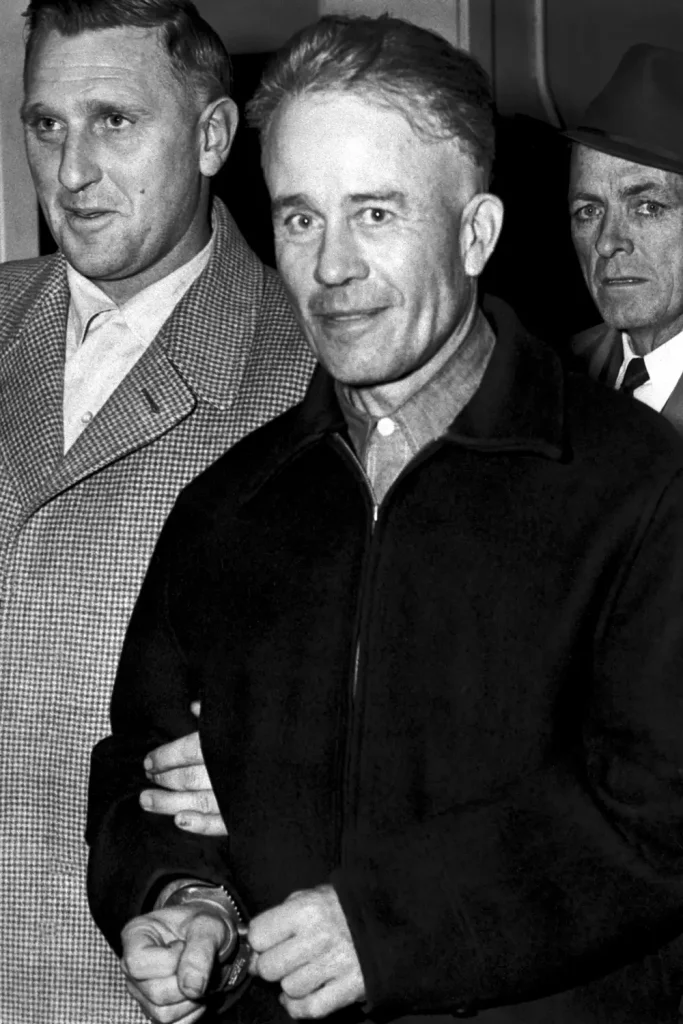Inside the Dark Mind of Ed Gein — The Quiet Man Whose Secrets Inspired Decades of Horror
In the quiet farming town of Plainfield, Wisconsin, nobody could have imagined the horror hiding behind Ed Gein’s weathered smile. To neighbors, he was simply an odd but harmless man, the kind who kept to himself, helped with small chores, and occasionally babysat for local families. He was seen as peculiar, even lonely, but not dangerous. That perception shattered completely in November 1957, when police entered his farmhouse and uncovered one of the most disturbing crime scenes in American history. What they found changed the way the world looked at evil forever.
It all began when local hardware store owner Bernice Worden went missing. Suspicion pointed to Gein after a receipt for antifreeze with his name on it was found in her store. When officers arrived at his isolated property to question him, they stumbled into a nightmare. Inside his cluttered, decaying farmhouse, the smell of decay filled the air. What the police discovered wasn’t just evidence of a murder—it was a revelation of unimaginable obsession and darkness. Furniture and household items made from human remains, masks crafted from human skin, and skulls used as bowls painted a picture of a mind completely detached from reality.

Gein confessed to killing two women—Bernice Worden and tavern owner Mary Hogan—but investigators later learned he had also been robbing graves, taking bodies from local cemeteries under the cover of night. He wasn’t a serial killer in the traditional sense; his crimes were rooted more in a twisted fascination with death, fueled by isolation and mental illness. Gein’s obsession with his mother, Augusta, who was deeply religious and harshly controlling, became the center of his distorted world. After her death, he spiraled into madness, unable to separate his grief from his dark fantasies.
The details of his crimes shocked the nation and inspired countless horror stories that followed. Ed Gein became the real-life basis for some of the most famous fictional killers ever written—Norman Bates in “Psycho,” Leatherface in “The Texas Chainsaw Massacre,” and Buffalo Bill in “The Silence of the Lambs.” Each of these characters carried fragments of Gein’s terrifying reality: the isolation, the obsession with transformation, and the eerie calmness that masked unspeakable acts. Yet, beneath all the horror and sensationalism, the story of Ed Gein is ultimately about a community blindsided by evil hiding in plain sight.

When Netflix announced that the third season of Ryan Murphy’s anthology series Monster would focus on Ed Gein, it reignited public fascination with the man whose crimes became cultural myth. Actor Charlie Hunnam takes on the haunting role, portraying Gein not as a monster from fiction but as the deeply broken man he truly was. Murphy’s adaptation dives into the psychological depths behind the crimes, exploring not just what Gein did, but how his isolation, trauma, and obsession led him down a path no one could have foreseen.
The true story of Ed Gein isn’t just about horror—it’s about the fragility of the human mind and how loneliness can twist into something unrecognizable. It forces us to confront uncomfortable truths about what society overlooks and how easily evil can take root when empathy disappears. In the decades since, Plainfield has tried to move on, but the memory of what was found on that cold November day still lingers like a shadow over its fields.
Even today, Ed Gein’s story remains both terrifying and tragic—a reminder that monsters aren’t always born; sometimes, they’re made in silence, behind closed doors, in the quietest corners of the world.



